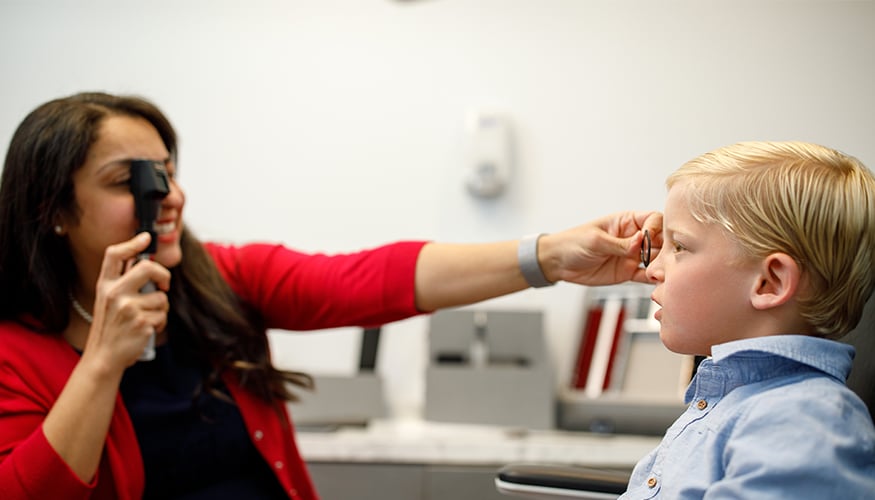Amblyopia Treatment in Jacksonville
Amblyopia, commonly referred to as “lazy eye”, is a condition in which one or both eyes fail to develop proper vision during childhood. It is the most common cause of unilateral visual impairment in US children, with an incidence of near 5%. Humans do not have 20/20 vision when they are born. Developing vision involves a neural process between the brain and the visual input from each eye. When this process is inhibited, amblyopia results. Amblyopia can be further categorized into specific etiologies; Strabismic, Deprivation and Refractive.

Strabismic Amblyopia, Deprivation Amblyopia, & Refractive Amblyopia
Strabismic Ambyopia occurs when the eyes are not properly aligned. The brain will fail to develop the visual pathway from the wandering eye, resulting in poor acuity in this eye. Deprivation amblyopia results from an obstruction of the visual axis. If visual input is blocked by a droopy eyelid (ptosis), corneal opacity or cataract, the brain never acquires the ability to see. Refractive amblyopia is seen when one eye has a different prescription than the other or both eyes have an unusually large refractive error. The brain will develop vision in the clearly seeing eye and ignore “blurry” input from the poorer seeing eye (anisometropic amblyopia). In many children with anisometropic refractive amblyopia, the eyes appear straight. Children may not complain of vision problems and may behave visually normal. MONOCULAR (each eye tested separately) vision screening is necessary for diagnosis.
Our Two Goals While Treating Amblyopia
- Prevent further suppression of visual development
- Repair damage done by previous suppression.
Eliminating strabismus, removing obstructions in the visual axis and providing refractive correction are the first steps in therapy, depending on the type of amblyopia diagnosed. This may require surgery and/or the use of glasses or contacts. Even if your child’s prescription seems small, it is important to provide the clearest image possible so that the brain can “relearn” how to see. The second goal, repairing previous damage, involves forcing the use of the amblyogenic eye over the use of the normal eye. Traditionally, this can be done using an occlusive eye patch over the “good eye”. At Pediatric Eye Consultants of North Florida, we understand that many children struggle with patching therapy. In certain cases, we may be able to offer alternative therapy options such as Atropine eye drops or even an occlusive contact lens. We strive to work with your child, not against him/her. We use positive reinforcement and encouragement whenever possible.
Amblyopia Therapy
Amblyopia therapy varies depending on the density of visual loss, age of the child, and etiology. Full time patching (6-8 hours per day) may be recommended initially, with a patching taper as vision improves. In general, patching generally requires 9-12 months of therapy in compliant patients, but may extend beyond this in refractory cases. To prevent regression in young children, “maintenance” patching with homework may be continued until the child is outside the amblyogenic age range. After the age of 9, children can no longer develop amblyopia, and it may be safe to stop amblyopia therapy without fear of regression. However, it has recently been discovered that children can successfully treat amblyopia beyond the age of 9, with improved acuity up until the age of 12 in previously untreated teens.
© 2025 Pediatric Eye Consultants of North Florida. All rights reserved. | Privacy & Terms of Use
